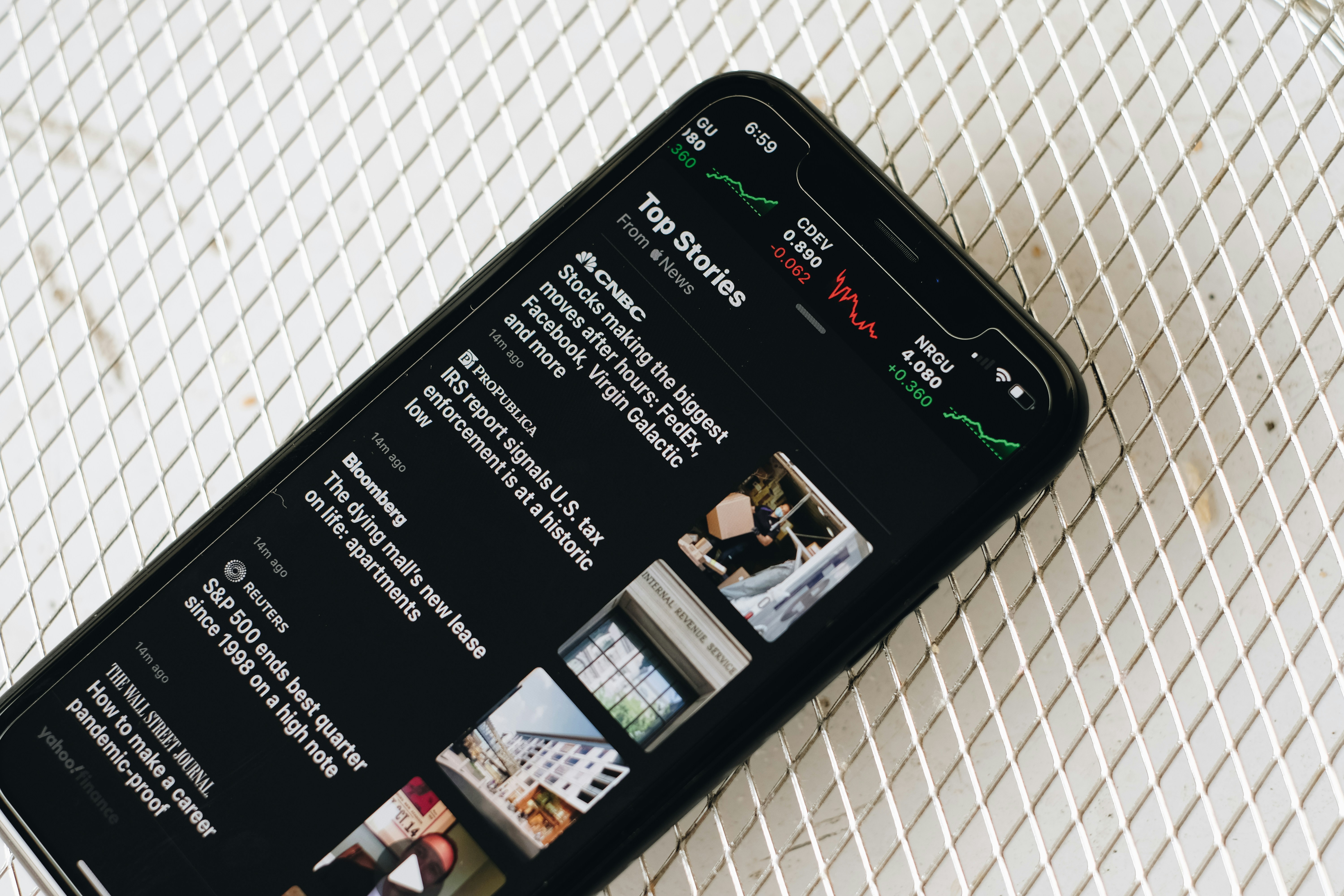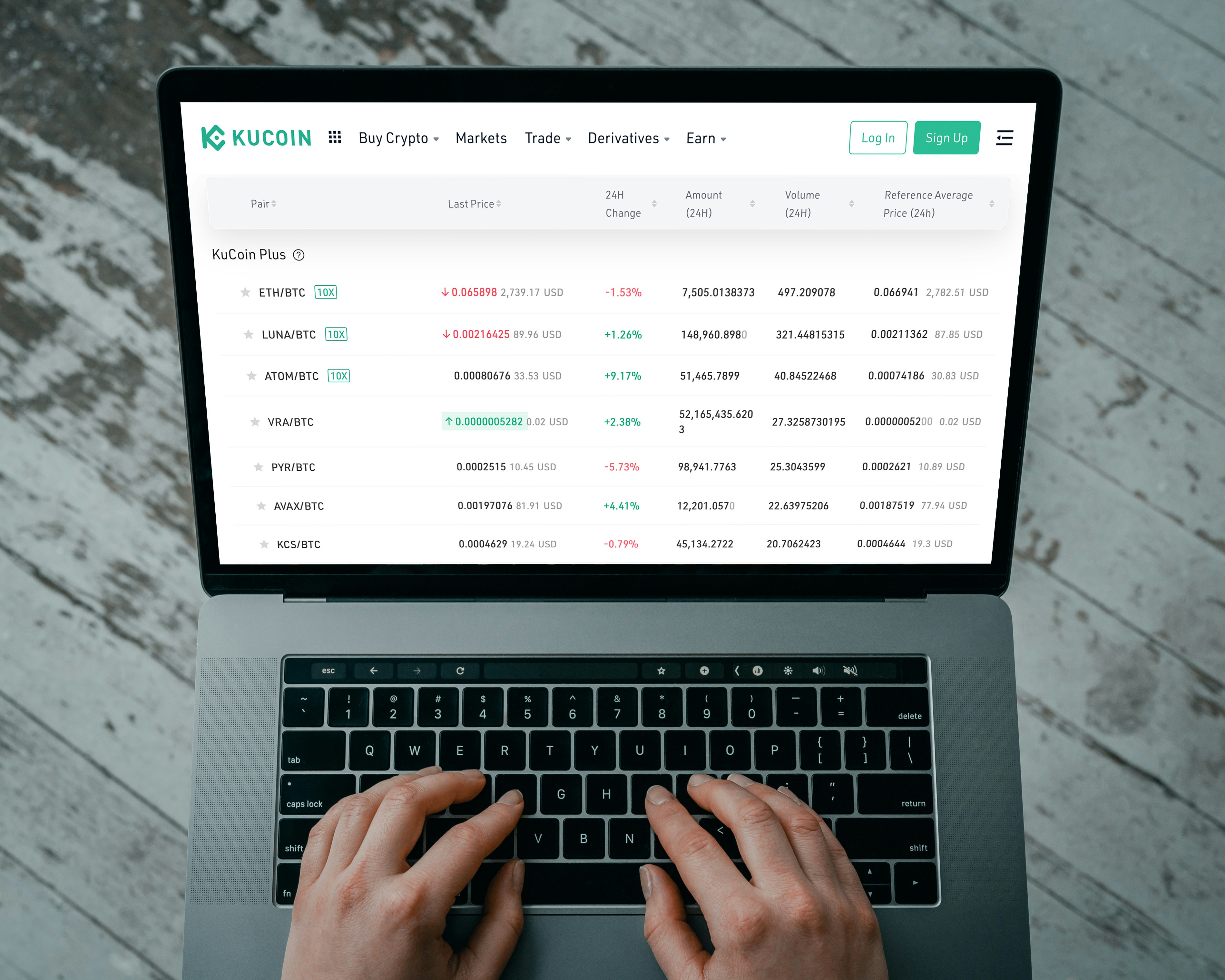Have you ever wondered about adopting a long-term investment approach to maximize your returns? If so, the HODL strategy might be just what you need. By focusing on holding certain assets for an extended period, you can potentially ride out market volatility and benefit from long-term growth. In this article, we will explore the HODL strategy in detail, examining its advantages and considerations, and empowering you to make informed investment decisions. So, get ready to delve into the world of long-term investment strategies and learn how HODL can be a valuable addition to your financial toolbox. Remember, patience is key!
Introduction to HODL Strategy
Definition of HODL
HODL, a term derived from a misspelling of “hold,” is a strategy in investment and trading that involves holding onto assets for the long term, regardless of short-term price fluctuations. The idea behind HODL is to resist the urge to sell assets during market downturns and instead have faith in their long-term potential.
Origin of HODL Strategy
The term “HODL” first gained popularity in the cryptocurrency community, specifically on a Bitcoin forum, where a user misspelled “hold” in a passionate post about not selling his Bitcoin during a market crash. From there, HODL became a rallying cry among investors who believed in the long-term potential of cryptocurrencies and other assets.
Benefits of HODL Strategy
The HODL strategy offers several benefits to investors. First and foremost, it eliminates the temptation to engage in short-term trading based on market fluctuations, which can lead to poor investment decisions. HODLing also allows investors to take advantage of the power of compounding over time, as assets held for the long term have the potential to grow significantly. Additionally, the HODL strategy can provide peace of mind, as it removes the stress and constant monitoring associated with short-term trading.
Determining the Right Assets to Hold
Researching the Asset
When considering the HODL strategy, it is crucial to thoroughly research the asset you intend to hold. This involves understanding the asset’s underlying technology, its industry, and any potential regulatory or legal implications. Look for projects or companies with solid foundations, strong management teams, and a clear vision for the future.
Evaluating Market Potential
Assessing the market potential of an asset is vital when deciding which ones to hold for the long term. Look for assets that operate in industries with significant growth potential or have distinct advantages over their competitors. Consider the current market size, projected growth rates, and any emerging trends that may impact the asset’s price in the future.
Understanding Long-Term Viability
Before committing to holding an asset, it is crucial to evaluate its long-term viability. Look for indicators that the asset has staying power, such as a strong user base or a loyal customer following. Additionally, consider any potential risks or challenges that could affect the asset’s viability, such as technological advancements or regulatory changes.
Considering Diversification
Diversification is an essential aspect of the HODL strategy. It involves spreading your holdings across different assets to mitigate risk and increase the likelihood of success. By diversifying, you reduce the impact of any single asset’s poor performance on your overall portfolio. When choosing assets to hold, consider those that complement each other and offer exposure to different market sectors.
Analyzing Historical Performance
Examining Asset’s Price Patterns
Analyzing an asset’s historical price patterns can provide valuable insights into its potential for long-term growth. Look for trends in price movements, such as consistent upward or downward trajectories, and identify any recurring patterns or cycles. However, it is important to remember that past performance does not guarantee future results, and other factors should be considered when making investment decisions.
Identifying Long-Term Growth Trends
Identifying long-term growth trends is crucial when determining which assets to hold for an extended period. Look for assets that align with societal shifts or emerging technologies that are projected to become increasingly relevant in the future. By investing in assets with long-term growth potential, you increase the chances of achieving significant returns over time.
Comparing Historical Performance to Market Factors
When analyzing an asset’s historical performance, it is important to consider how external market factors have influenced its price movements. Look for correlations between the asset’s performance and factors such as economic indicators, industry trends, or geopolitical events. This comparative analysis can provide a deeper understanding of how these factors impact the asset and help you make more informed decisions about holding it for the long term.
Understanding Volatility and Risk
Volatility and risk are inherent in the investment market, and it is vital to understand these factors when holding assets for the long term. Evaluate an asset’s historical volatility by analyzing its price fluctuations over various timeframes. Additionally, assess the level of risk associated with the asset, considering factors such as market conditions, competition, and regulatory changes. Understanding and accepting the potential risks involved in long-term holding can help you make better-informed decisions.
Gauging Future Potential
Studying Fundamental Factors
Studying an asset’s fundamental factors is an essential step in assessing its future potential. Look at key metrics such as revenue growth, earnings, and market share to determine the asset’s financial health and stability. Consider any unique advantages the asset has, such as intellectual property or exclusive partnerships, that could contribute to its long-term success.
Assessing Technological Advancements
Technological advancements can significantly impact the future potential of an asset. Evaluate whether the asset’s underlying technology is innovative and has the potential to disrupt traditional industries or create new markets. Additionally, consider whether the asset is well-positioned to adapt to future technological changes that may impact its competitive advantage.
Analyzing Industry and Market Trends
Analyzing industry and market trends is crucial when gauging the future potential of an asset. Look for assets that operate within industries poised for growth or those that are expected to benefit from emerging trends. Stay informed about market developments, regulatory changes, and consumer behavior to assess how these factors might impact the asset’s long-term viability.
Considering Global Economic Conditions
Global economic conditions can have a significant impact on asset performance. Assess the potential effects of economic factors such as inflation, interest rates, and currency fluctuations on the asset you intend to hold. Additionally, consider the asset’s exposure to international markets and geopolitical risks, as these can influence its long-term growth prospects.
Factors to Consider Before HODLing
Understanding Liquidity
Liquidity refers to how easily an asset can be bought or sold without affecting its price. Consider the liquidity of the asset you plan to hold for the long term, as it can impact your ability to exit or enter a position when needed. Assets with lower liquidity may make it challenging to sell in times of market volatility, potentially leading to unfavorable outcomes.
Evaluating Investor Sentiment
Investor sentiment plays a crucial role in asset price movements. Assess the prevailing sentiment surrounding the asset you plan to hold, considering factors such as media coverage, social media discussions, and market sentiment indicators. While sentiment should not be the sole basis for decision-making, it can provide insights into how other market participants perceive the asset’s future prospects.
Assessing Regulatory Environment
The regulatory environment can significantly impact the long-term viability of an asset. Evaluate the regulatory landscape surrounding the asset you intend to hold, considering factors such as government regulations, compliance requirements, and potential legal challenges. Assets operating in heavily regulated industries or jurisdictions may face additional hurdles and risks that need to be carefully considered.
Keeping Up with News and Updates
Staying informed about the latest news and updates relevant to the asset you plan to hold is essential. Subscribe to reputable news sources, follow industry experts, and participate in relevant forums or communities to stay up-to-date with developments. By being well-informed, you can make more informed decisions about when to hold onto or divest from an asset.
Managing Risks and Challenges
Setting Realistic Expectations
Setting realistic expectations is essential when adopting the HODL strategy. Understand that long-term investments can take time to yield significant returns and that market fluctuations are part of the investment journey. Avoid succumbing to unrealistic expectations of quick wealth and instead focus on the long-term potential of the assets you hold.
Implementing Stop-Loss Strategies
While HODLing involves holding onto assets for the long term, it is still important to manage downside risk. Implementing stop-loss strategies can help protect your investments from significant losses during market downturns. Set predetermined price levels at which you will sell a portion or all of your holdings to limit potential losses and preserve capital.
Monitoring Market Conditions
Continuously monitoring market conditions is crucial when holding assets for the long term. Stay abreast of major market events, economic indicators, and industry news that may impact the asset’s performance. By staying informed, you can proactively respond to changes and make adjustments to your portfolio when necessary.
Planning for Tax Implications
When adopting the HODL strategy, it is crucial to consider the tax implications of holding assets for an extended period. Understand the tax laws and regulations in your jurisdiction and consult with a tax professional if needed. Planning for potential tax liabilities can ensure that you comply with the law and optimize your after-tax returns.

Balancing Long-Term and Short-Term Investments
Defining Investment Goals
Before implementing the HODL strategy, define your investment goals. Determine the purpose of your investment portfolio, whether it is for long-term growth, income generation, or a combination of both. This clarity will guide the allocation of your assets and help strike the right balance between long-term and short-term investments.
Allocating Portfolio for HODL Strategy
Once you have defined your investment goals, allocate your portfolio for the HODL strategy. Determine the percentage of your assets that will be held for the long term and those that will be allocated for short-term trading or other investment strategies. Consider your risk tolerance and diversify your HODL portfolio across different asset classes to reduce risk and increase potential returns.
Considering Dollar-Cost Averaging
Dollar-cost averaging is a strategy where you invest a fixed amount of money at regular intervals, regardless of the asset’s price. This approach can be useful in a HODL strategy as it helps to mitigate the impact of short-term market volatility. By consistently investing a fixed amount over time, you buy more of an asset when prices are low and less when prices are high, potentially lowering your average cost per share.
Opportunities for Short-Term Trading
While the focus of the HODL strategy is on long-term holding, opportunities for short-term trading may arise. Stay vigilant for favorable market conditions or price discrepancies that could allow for short-term trading to capitalize on market inefficiencies. However, ensure that short-term trading aligns with your overall investment strategy and risk tolerance.
Mitigating Emotional Decision-Making
Developing a Solid Investment Plan
To mitigate emotional decision-making, develop a solid investment plan that aligns with your long-term goals and risk tolerance. Set clear guidelines and strategies for when to buy, hold, or sell assets and stick to them. By having predefined rules, you can avoid making impulsive decisions driven by emotions.
Ignoring Short-Term Price Fluctuations
HODLers should learn to ignore short-term price fluctuations and focus on the long-term potential of their assets. Volatility is a natural part of the market, and prices can experience significant fluctuations in the short term. By maintaining a long-term perspective, you can avoid getting swayed by short-term market noise.
Avoiding Impulsive Trading
Impulsive trading can derail the HODL strategy and lead to poor investment decisions. Resist the urge to make trades based on fleeting market trends or emotions. Stick to your investment plan and avoid making impulsive trades driven by fear or greed. Remember that successful investing requires discipline and patience.
Seeking Professional Advice
If you find it challenging to manage your emotions or make sound investment decisions, consider seeking professional advice. A financial advisor or investment professional can provide objective guidance based on your individual circumstances and investment goals. They can help you develop a personalized strategy and offer expert insights into navigating the market.

Examples of Assets Suitable for HODL Strategy
Cryptocurrencies with Strong Potential
Cryptocurrencies, such as Bitcoin and Ethereum, have gained popularity among HODLers due to their potential for long-term growth. These digital assets operate on innovative blockchain technology and have the potential to disrupt traditional financial systems. Before investing, carefully research the specific cryptocurrencies, their underlying technology, and their potential for adoption and scalability.
Blue-Chip Stocks
Blue-chip stocks are shares in well-established companies with a long history of stable earnings and a strong market presence. These stocks are often considered safe long-term investments and can provide steady growth and income over time. Conduct thorough research on the company’s financials, industry position, and long-term growth prospects before including blue-chip stocks in your HODL portfolio.
Real Estate Investments
Real estate investments, such as rental properties or real estate investment trusts (REITs), can offer long-term appreciation and income potential. Real estate has historically been a solid asset class for long-term holding due to its stability and potential for value appreciation. However, it is essential to research the local real estate market, consider maintenance costs, and assess the potential risks before investing in real estate.
Precious Metals
Precious metals, such as gold and silver, have long been considered a safe haven for investors during times of economic uncertainty. These assets can act as a store of value and provide a hedge against inflation. Before investing in precious metals, understand the market dynamics, supply and demand factors, and the role they play in your overall portfolio.
Reviewing and Adjusting HODL Portfolio
Regularly Monitoring Asset Performance
Regularly monitor the performance of your HODL portfolio to stay informed about how your assets are performing. Set a regular schedule for reviewing your holdings and assess whether they continue to align with your long-term investment goals. Stay vigilant for any significant changes or events that may impact the assets’ performance.
Evaluating Changes in Market Conditions
Continuously evaluate changes in market conditions and assess how they may impact your HODL portfolio. Stay informed about economic indicators, industry trends, and regulatory developments that may affect the assets you hold. By staying proactive and adapting to changing market conditions, you can optimize your HODL strategy.
Rebalancing the Portfolio
Rebalancing your portfolio involves periodically adjusting the allocation of your assets to maintain the desired risk-return profile. Review your asset allocation, taking into consideration changes in your investment goals and market conditions. Rebalancing allows you to sell overperforming assets and buy underperforming assets, ensuring that your portfolio remains diversified and aligned with your long-term goals.
Deciding When to Realize Profits
Deciding when to realize profits from your HODL investments is a crucial aspect of managing your portfolio. Evaluate the performance of your assets and consider your investment goals and risk tolerance when determining whether to sell and realize gains. Avoid being driven solely by short-term market sentiment and make informed decisions based on the long-term potential of your assets.
In conclusion, the HODL strategy is a long-term investment approach that involves holding onto assets even during short-term market volatility. By thoroughly researching assets, analyzing historical performance, gauging future potential, and considering various factors, investors can identify the right assets to hold for the long term. Managing risks, balancing long-term and short-term investments, mitigating emotional decision-making, and regularly reviewing and adjusting the HODL portfolio are essential to the success of this investment strategy. By following these principles, investors can optimize their chances of achieving long-term growth and financial success.



